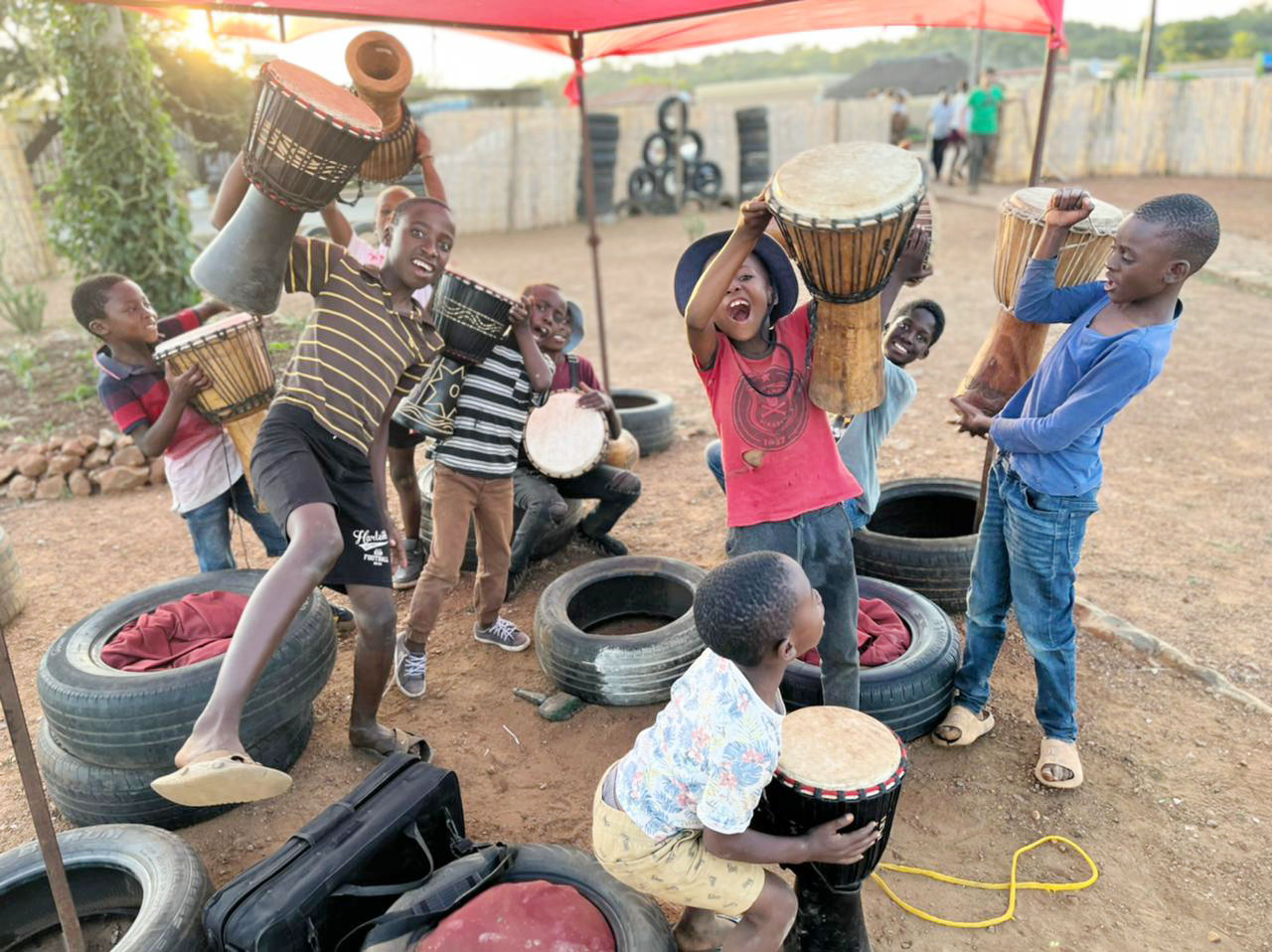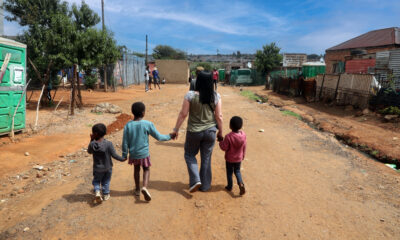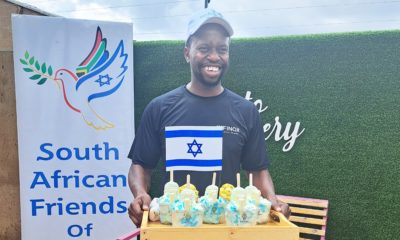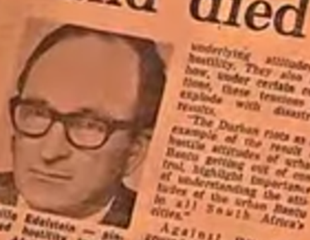
Community

Turning dump site into heart of creativity for Soweto youth
The gift of enabling children from Soweto to create crafts at a former dump site in Freedom Park is not lost on Moshe Singer, a multidisciplinary artist who was involved in the initiative. Though surrounded by shacks, this area, called the Creative Arts Space, has become a place where children from the area can learn art, sewing, music, dance, and engineering.
The children’s work was displayed on Sunday, 4 December, during a Hakhel Creative Gatherings Arts Showcase in Freedom Park.
Freedom Park resident Thato Moloi, the founder of the Creative Arts Space, and his partner, started cleaning a dump site in the area to create a space for children to feel safe and “at home”, says Singer, the co-founder of Creative Gatherings. “Being an artist, and fashion designer, Thato recognised an opportunity to make it a space for kids to learn art and create fashion.”
Moloi is friends with artists and musicians who have come to the area to support the children and conduct workshops on Sundays, says Singer’s fellow Johannesburg-based Creative Gatherings co-founder, Yael Shapiro, a music therapist. Founded about six years ago, Creative Gatherings brings artists from different areas together for collaborations.
Shapiro and Singer got involved in the project when one of their friends from Creative Gatherings introduced them to the space at Freedom Park.
“The ethos of their project really spoke to what we were doing, so Moshe, myself, and a few other Creative Gatherings participants have gone there to work with the children,” Shapiro says. “Being part of a group called Hakhel: The Jewish Intentional Communities Incubator, and Shalom Corps, we brought along a group of volunteers from overseas.”
Volunteers from Mexico, France, Austria, and the United States all arrived in Freedom Park.
“We asked Thato and his partner what support they needed to make it sustainable,” Shapiro says. “We’re not bringing our Western ideas to fix what’s going on here. We actually have a lot to learn as outsiders, also as Jews, from this community, and how we can collaborate, learn from each other, and work together to support this project.”
Having international volunteers was important, as it allowed them to see the beauty and problems of Freedom Park, says Leigh Nudelman Sussman, a multidisciplinary artist and the founder of 9th Street, a South African art group. “Only through the eyes of somebody else sometimes can you really truly reflect and do tikkun olam. It’s like being a parent – often your children reflect back to you some of your inadequacies.”
Singer and Shapiro took the volunteers, not all of whom are Jewish, to help out at Sandringham Gardens during the past week. “We also went to the Holocaust Museum to share our history,” Singer says. “Then, we took the international participants to the Apartheid Museum. This was about meshing our understanding of each other’s backgrounds, contributing towards creating artwork that mashed up these different cultures.
“We had an incredible moment, for example, when the African participants performed the salsa, and the international participants learned African drumming. In the end, it was a constant exchange of art and styles, but rooted in cultural understanding. It was about an exploration of the self and celebration of the other. It made everyone feel welcome and connected, because Creative Gatherings’ ethos is about connecting arts and culture through ubuntu and tikkun olam.”
One of the international participants, a visual artist, created African-style costumes out of newspapers, before putting on a fashion show.
The showcase focused on the children’s creations, Shapiro says. “From a music therapy perspective, when you have an opportunity to perform or showcase your artwork, you have an opportunity to try on a different part of your identity. So, for some of these children, where a lot of their identity may be coming from a trauma or quite traumatic home, it’s an opportunity to see themselves in a different way and explore different cultures. They wrote a Zulu song about being proud of their neighbourhood and community, and it gave them an opportunity for reflection on that as well.”
Says Sussman, “The arts can turn Maslow’s hierarchy of needs on its head. Just because you don’t have your basic needs sorted out, it doesn’t mean you don’t deserve the dignity, joy, and equality the arts bring.”
Singer says he hopes “international communities will model what we have accomplished. My hope is eventually to do a project like this in Israel. Conflict resolution can be done in a tender and sensitive way through the arts, and by mixing cultures to create something new and dynamic with a shared vision.”
Singer says they hope to create a documentary of the Freedom Park project.
“I’ve learned so much during this experience such as working with limited resources,” Shapiro says. “The space is very much about using what we have and recycling materials like old tyres.”
“The idea is to create future leaders with art, science, technology, and culture,” Moloi says. “Our purpose is to combine different cultures worldwide to share the idea of teaching kids our talents and skills, converting the huge dump site to a beautiful tourism attraction and an inspiration around the hood and to the world. The plan is to make sure that free art education is shared with kids and elders.”
- For anyone wanting to get involved or contribute, please email sa.creativegatherings@gmail.com










